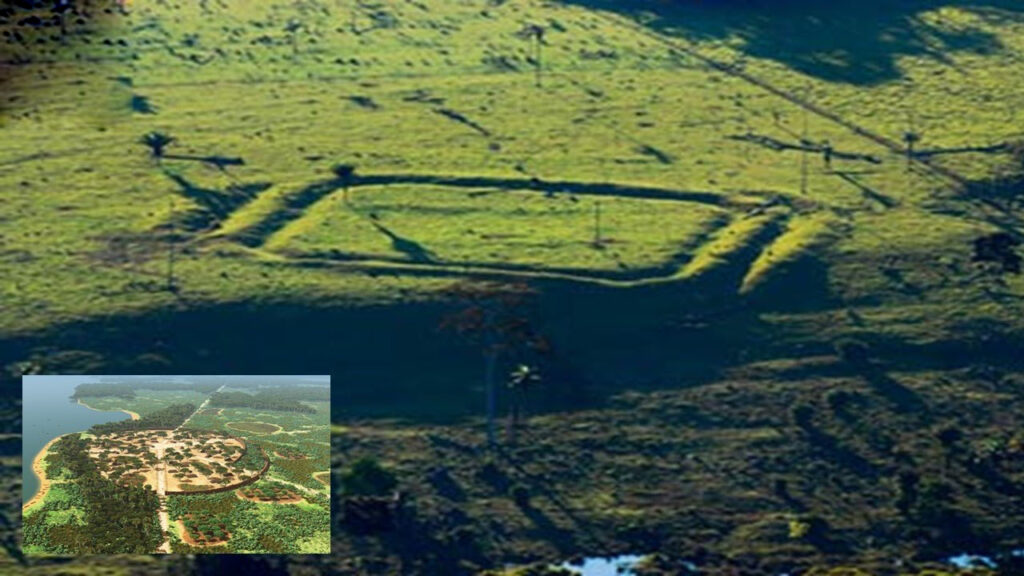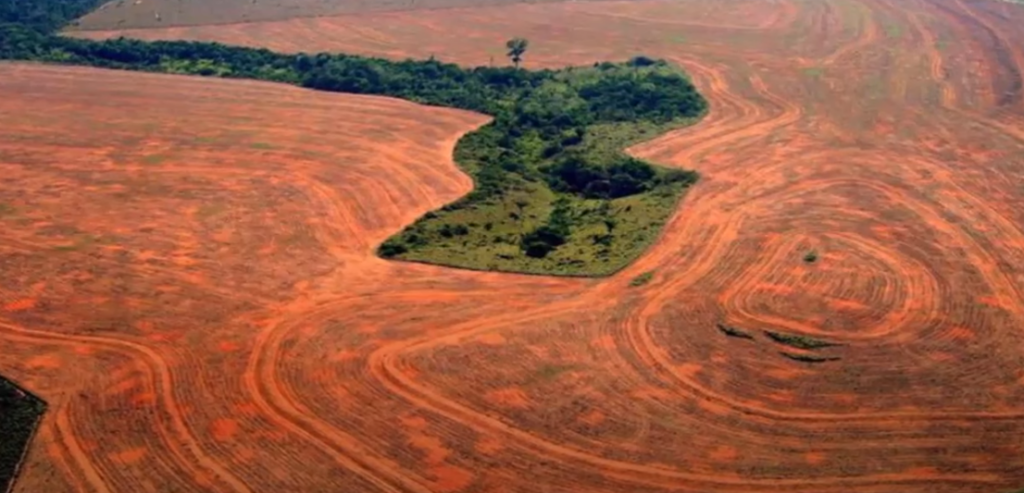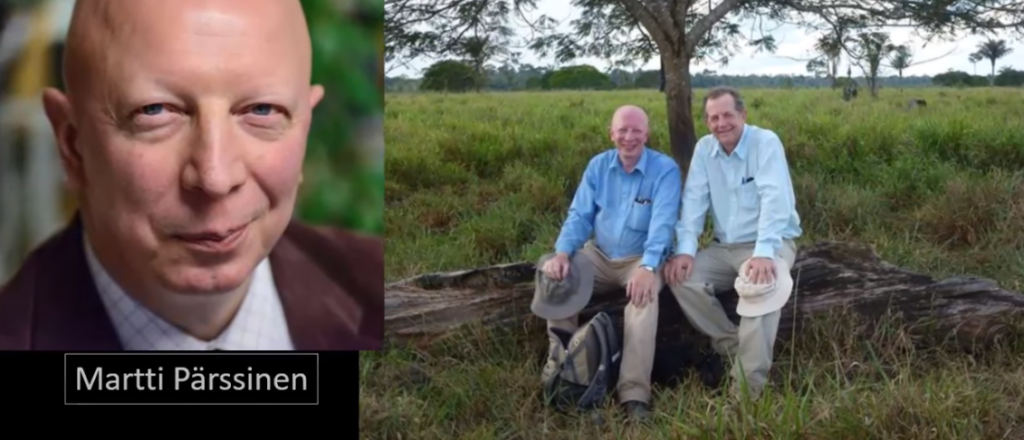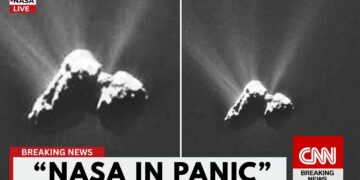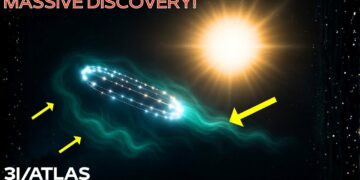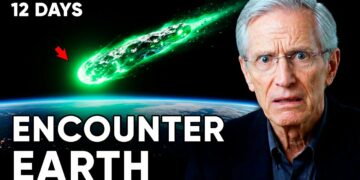The slow destruction of the Amazonian rain forest, the felling of thousands of square miles of trees, has shown us the result of man’s greedy and sometimes irresponsible hunger for resources and, ironically, what may become one of the most important historical discoveries of the modern age.
Evidence of a very ancient, and as yet, unknown civilization has become apparent upon the now barren landscape—a culture which would have dwarfed the Egyptian and Roman empires combined.
As a result of the drastic deforestation that has taken place over the last few decades to make way for farming land, vast swathes of land features have become visible from the air. These now grassy areas show evidence of numerous enormous complex ancient cities and the remnants of what could be classified as straight roman roads connecting these massive sites.
The only problem is the constructors of these roman roads came and went along before the Romans.
According to a new report published in the journal of Antiquity, the archaeologist Martii Pärssinen, along with numerous other scientists, have documented more than two hundred and ten geometric structures.
The city spreads out over more than two hundred and fifty square kilometers, reaching from northern Bolivia to the state of Amazonia in Brazil.
Although the early explorers had heard legends from the Indians regarding a fabulously wealthy Amazonian civilization, which they named El Dorado, the countless searches for this city of gold, have all invariably failed.
No evidence of a vast ancient civilization within Amazonia had ever materialized, that is until now. Most scholars subsequently concluded that El Dorado was no more than a story. Indeed, scientists believed that the severe conditions in the jungle were too inhospitable to support a large population.
The most influential archaeologist of the twentieth century, Betty Meggers, famously dubbed the region a “counterfeit paradise.” In the early nineteen-hundreds, the British explorer Percy Harrison Fawcett, While exploring and mapping much of the same area where the ruins were recently discovered, reported finding large earth mounds filled with ancient and brittle pottery. And Buried under the jungle floor, he claimed he had also found traces of causeways and roadways.
Based on this and other evidence, he insisted that the Amazon once contained large populations and at least one, if not more, advanced civilizations.
Despite being dismissed and ridiculed as a crank, he set off in 1925 to find the place. He christened the “City of Z.” Shortly after that, his entire party, including his twenty-one-year-old son, Jack, vanished within the jungle; they were never seen of again.
Because of the symmetrical shape of many of these mounds now seen from the air and the way they slant to the north, a possibility that they may have had an astronomical purpose has begun to be seriously looked at.
We could be on the verge of discovering another highly advanced civilization that once lived here on earth.


